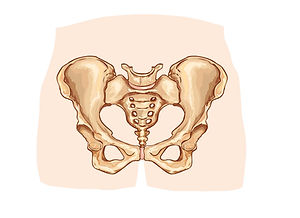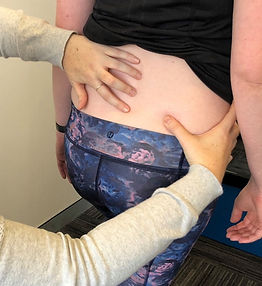Pelvic Pain
Inflammation of the pelvic joints can be extremely painful. It is most commonly caused by joint stiffness, overload, or poor control. Poor control of the pelvis (including sacroiliac joints) is most commonly a motor control issue - in other words the muscles are tight, weak, and/or turning on in the wrong order. Issues in the pelvis can also be impacted by trauma like a heavy fall on the bottom, the laxity of the ligaments and tissues in cases of hypermobility, or even by hormonal factors such as pregnancy or a menstrual cycle in a person with endometriosis.
Pregnancy causes huge strain on the pelvic bone, pelvic organs and all the surrounding tissues. There is an associated softening of the ligaments as the body prepares for birth. The pelvis physically changes shape - and that's all before someone has even given birth. The implications of pregnancy and a vaginal or c-section delivery on a pelvis is huge.
When people think of pelvic pain they typically think of external pelvic pain, pain that is often an extension of back pain, the result of a fall on the bottom, or a sporting injury, but pelvic pain can also be internal.
Dysfunction in the pelvic floor muscles can create a wide variety of problems such as back pain, hip pain, chronic hamstring issues, continence issues (leaking of urine and/or faeces), and it can also impact peoples intimate lives.
At Fundamental Physio & Pilates we can help with a wide range of pelvic pain. The key to restoring function in the pelvis and reducing pain is looking at the whole body and the way the pelvis interacts with other areas to assess how the pelvis is being loaded and stressed. A quality physio will work with you to identify which muscles need to learn to relax more, which ones need to activate more, and any other factors that are causing excess load and strain on your pelvis.



